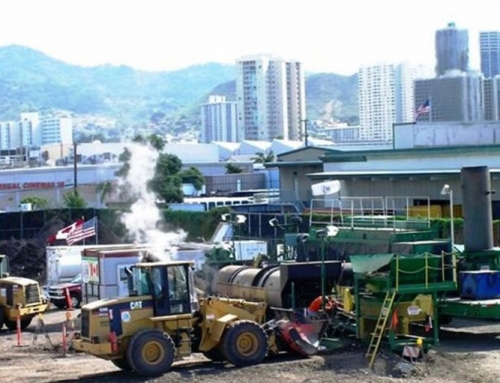Nelson Environmental Remediation Ltd. headed east to Saskatchewan to complete the remediation of a contaminated oil and gas industry site in February 2011 and completed the project on the anticipated date of June 2011.
The project came in at $2.1 million and using Nelson’s low-temperature thermal desorption soil remediation technology, on-site workers were able to remediate 22,000 tonnes of soil for beneficial reuse. Nelson was hired by Crescent Point Energy Corporation out of Calgary for their site near Weyburn, SK. The goal of the remediation technology was to treat the petroleum contaminated soil to below SPIGEC 4 Petroleum Hydrocarbon criteria, resulting from a Bakken Oil pipeline rupture.
Initial mobilization and project setup activities began in late February 2011 with complete project commencement underway by early March 2011. By early June 2011, approximately 22,000 tonnes of PHC-impacted soil had been excavated, prepared and thermally-treated, meeting cleanup criteria for SPIGEC 4. By late June 2011, NER completed demobilization activities at the location and began the task of mobilization to the next project site.
The initial goal of the project was to discover where a non-contaminated floor and wall of soil existed, in order to have a benchmark to excavate the contaminated soil.
Excavation activities commenced on the west side of the site where a clean zone was established laterally and, at depth. As contaminated soil was excavated, it was spotted or transported to a screener (6’ x 21’ McCloskey) for homogenization of material and elimination of wood, rock and other debris.
With the project beginning in winter and finishing during the early summer months, crews faced the challenge of working in extreme cold and warmth.
The project was a challenge in terms of the amount of equipment utilized, the wear-and-tear on the thermal desorption unit and, at times, the weather conditions which ranged from -40°C to +30°C.
The technology applied to this project was known as, ‘Low-Temperature Thermal Desorption’ (LTTD) or, ‘On-site, Ex-situ Thermal Treatment’. The functional design of the system was to remediate soil contaminated with non-recycled distillate petroleum hydrocarbons including gasoline, jet fuel, diesel, polynuclear aromatic hydrocarbons, as well as solvents, by rapidly volatizing these products from soil, then thermally destructing them in the oxidation system. The major mechanical components of the unit consisted of: a control house; soil feed system (including a weigh scale); a rotary drum desorber; a treated soil handling system; a baghouse filtration system; a thermal oxidizer. Auxiliary systems include fuel, air and water delivery systems and a process control, monitoring and interlock system.
Overall, Nelson was responsible for the excavation, preparation, treatment, back-filling, and contouring of the impacted soil, which was eventually returned for beneficial reuse.
The on-site thermal treatment of the soil was price competitive with the alternative of landfilling and eliminated the need for thousands of truckloads of soil destined to a Saskatchewan contaminated soil landfill.








